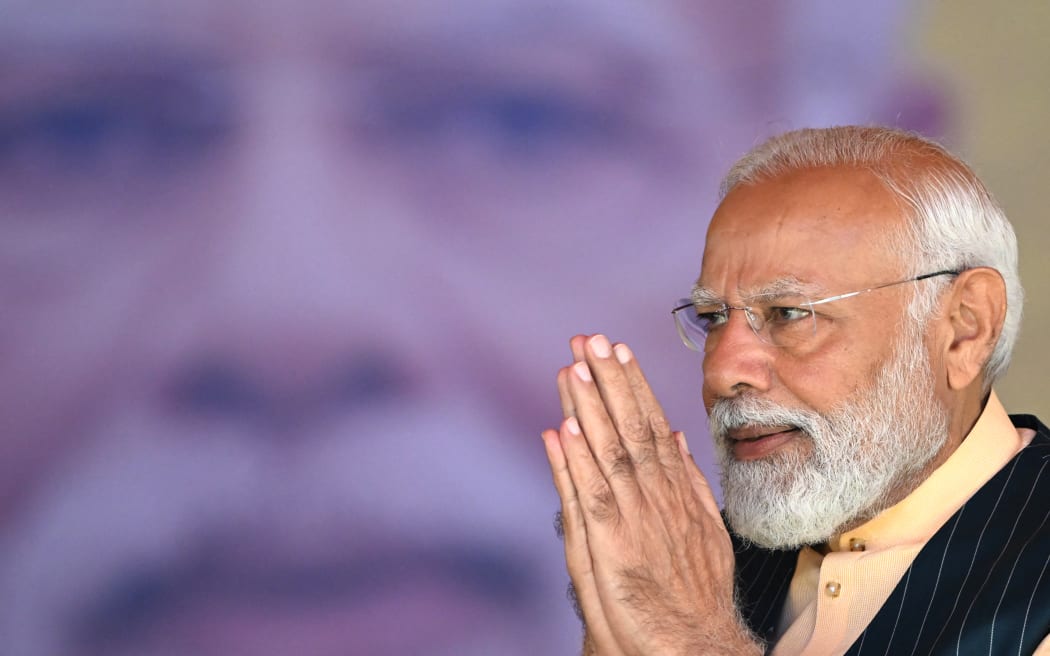Challenges for India’s Modi in his third term as prime minister


Analysis: India’s Narendra Modi is set to be sworn in as prime minister on Sunday (local time) for a third straight term – a rare feat that will also come with new challenges as the populist leader is forced to rely on allies to form a government.
Here are some key issues Modi will need to tackle in office.
Funds, special status for allies
In the near term, Modi’s government may need to spend more to meet the demands of allies that helped him secure a majority in parliament, testing the government’s purse.
Regional parties in Modi’s alliance have already demanded more funds for their states and federal cabinet positions during negotiations on forming a new coalition government.
Andhra Pradesh state’s Telugu Desam Party and Bihar’s Janata Dal (United) are also pushing longstanding demands to grant special status to their states, which would allow the states to receive more federal development funds on simpler terms.
Economic disparity
India’s economy grew by 8.2 percent in the last fiscal year, one of the fastest rates among major economies, but voters have pointed to disparities on the ground, with growth more visible in cities than in the vast hinterland.
The economy has jumped five places to be the fifth-largest in the world in the past decade under Modi’s rule and he has said he will lift it to the third position. But the country’s per capita income still remains the lowest among G20 nations.
Nevertheless, S&P Global Ratings in late May raised India’s sovereign rating outlook to ‘positive’ from ‘stable’ while retaining the rating at ‘BBB-‘, saying the country’s robust economic expansion was having a constructive impact on its credit metrics.
“Middle class is the driving force of the country,” Modi said at an alliance meeting on Friday. “In the coming days we will work on increasing middle class savings, improving their quality of life, and seeing what needs to be changed in our rules to achieve that.”
Inflation above central bank target
Annual retail inflation in April stood at 4.83 percent, slightly lower than March, but still above the central bank’s 4 percent target.
Food inflation, which accounts for nearly half of the overall consumer price basket, was an annual 8.70 percent in April, compared with a 8.52 percent rise in the previous month. Food inflation has been at more than 8 percent year-on-year since November 2023.
For the current year, the Reserve Bank of India has projected headline inflation at 4.5 percent while raising outlook for economic growth to 7.2 percent.
Modi has banned exports of wheat and rice to contain domestic inflation.
Unemployment
Unemployment in India has also been one of the main issues in the election campaign with Congress accusing the Modi government of doing little to provide jobs for the youth.
Modi’s Bharatiya Janata Party (BJP) lost a third of the seats it held in rural constituencies, an analysis of voting data showed, reflecting discontent in the countryside over lack of jobs and inflation.
The unemployment rate in India rose to 8.1 percent in April from 7.4 percent in March, according to the private think-tank Centre for Monitoring Indian Economy.
Government estimates for the latest January-March quarter show that the urban unemployment rate in the 15-29 age group ticked higher to 17 percent from 16.5 percent in the prior quarter.
The overall urban unemployment rate in the January-March quarter stood at 6.7 percent, compared to 6.5 percent in the previous quarter, according to government data.
The Indian government does not release quarterly unemployment figures for rural India.
Foreign relations
India’s rising world stature and assertive foreign policy have been touted as major recent achievements by Modi’s administration.
A key diplomatic strain, however, remains with China which was spurred by a 2020 border clash that left 20 Indian and four Chinese soldiers dead. Modi said last month the countries should address the “prolonged situation” on their border.
Modi’s government has been trying to attract foreign companies to diversify supply chains beyond China.
Relations with Canada have also been strained after Ottawa and Washington accused an Indian official of directing the plot in the attempted murder of Gurpatwant Singh Pannun, a Sikh separatist and dual citizen of the United States and Canada.
In May, Canadian police arrested and charged three Indian men with the murder of Sikh separatist leader Hardeep Singh Nijjar last year and said they were probing whether the men had ties to the Indian government.
Taxes
An industry lobby group this year called for a tax exemption limit for individuals to be increased and linked with inflation to help boost consumption.
The Confederation of Indian Industry also asked that the government review its capital gains tax structure by bringing consistency in tax rates for different asset classes such as debt, equity and immovable assets.
Modi in his third term could be forced to look at lowering taxes for individuals to boost consumption, which has been the weak link in an otherwise fast-growing economy.
Farmers
Stagnant farm income is a major sign of widening inequality between urban and rural India that has led to widespread protests. The BJP had promised to double farm income by 2022 in its manifesto for the last election, but has failed to do so.
Despite that, Modi has set a new goal to lift rural per-capita income by 50 percent by 2030 but farmers remain sceptical of such plans, Reuters reported earlier.
Land, labour reforms
In February, a BJP spokesperson said Modi could make labour reforms a priority if he wins the general election. But with the pressures of a coalition government and a stronger opposition, Modi may have to delay such reforms.
New labour codes, which would make it easier for firms to hire and fire workers and impose operating restrictions on unions, were approved by parliament in 2020, but they have yet to be implemented following resistance from workers and states.
In his first term as prime minister, Modi tried to push through legislation that would have made it easier to buy land for industrial corridors, rural housing and electrification, and for defence purposes. However, the plan was put on the backburner amid stiff resistance from the opposition.
– Reuters
According to the news on Radio New Zealand




